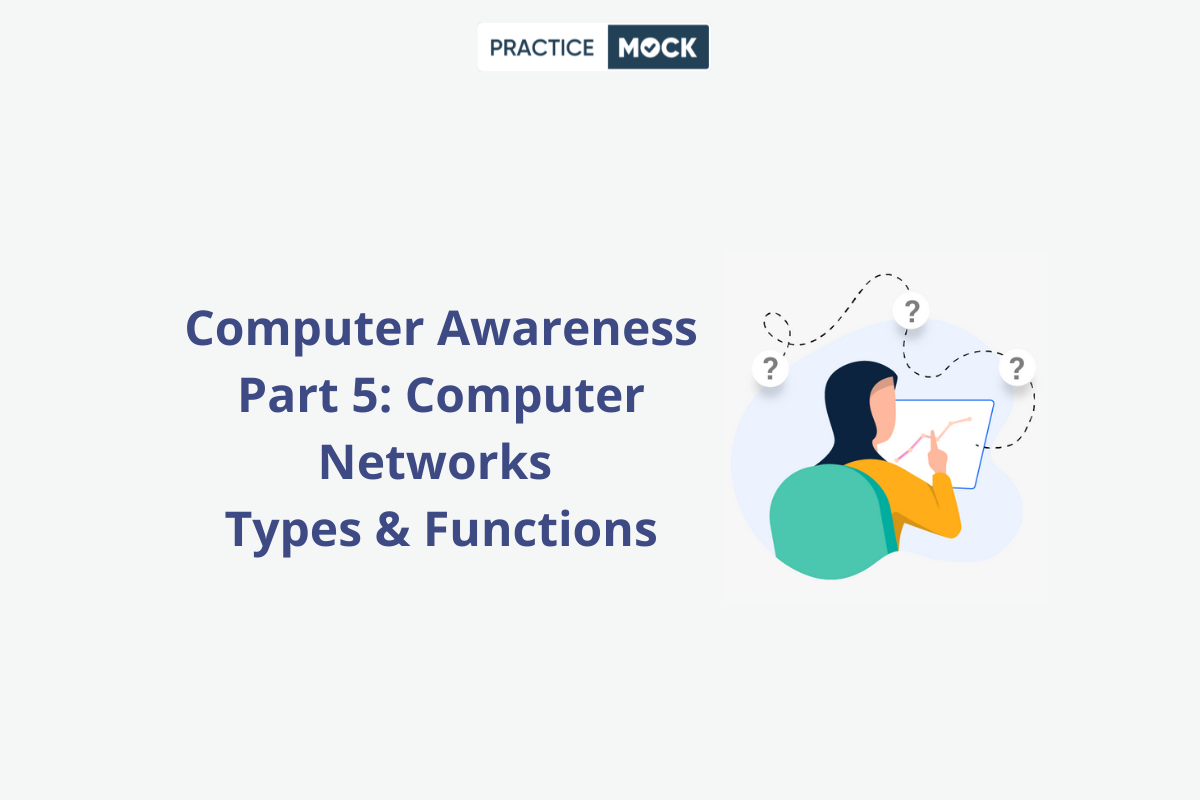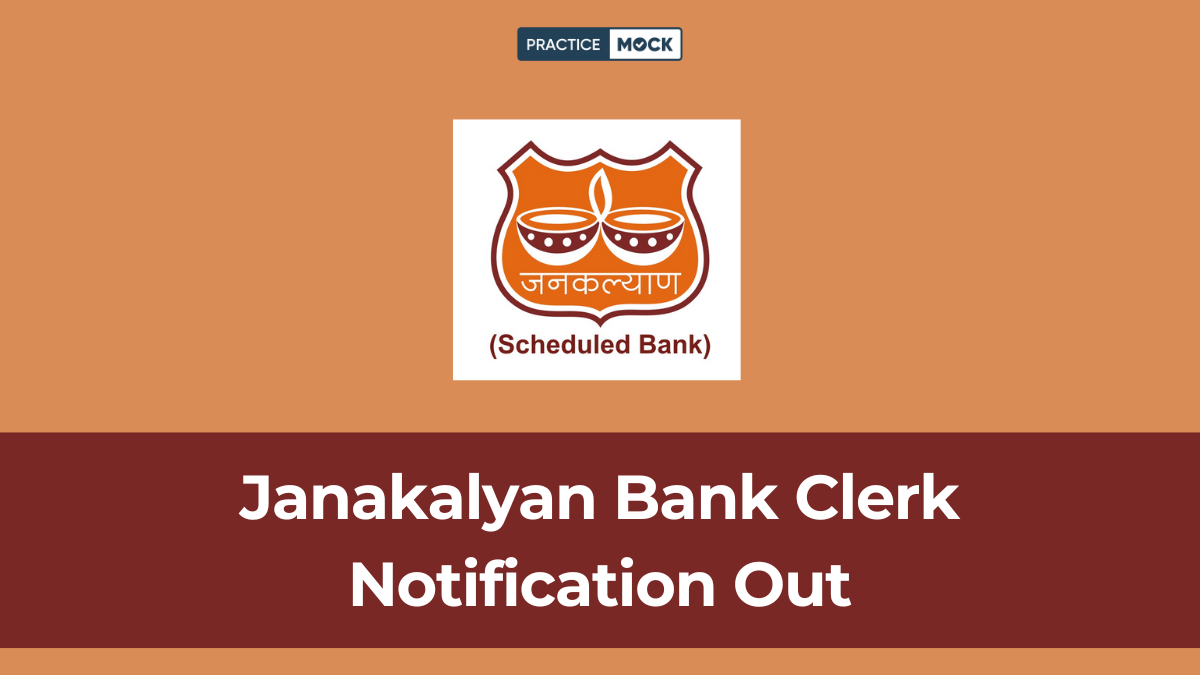Computer Awareness Part 5-Computer Networks-Types & Functions


A computer network can be defined as a set of computers sharing resources located on or provided by network nodes. The computers communicate with each other by using common communication protocols over digital interconnections. These interconnections consist of telecommunication network technologies, based on physically wired, optical, and wireless radio-frequency methods that may be arranged in many types of network topologies.
The nodes of a computer network may include:
- Personal computers
- Servers
- Networking hardware
- Other specialised or general-purpose hosts
You may also like to read, Computer Awareness Part 3-History of computers for All Bank Exams


These nodes are recognized by hostnames and network addresses. Hostnames serve as memorable labels for the nodes, rarely changed after initial assignment. Network addresses serve for locating and identifying the nodes by communication protocols such as the Internet Protocol.
The Computer Knowledge or Awareness section of the major Bank exams frequently invite questions on Computer Networking forms. Hence, it is a crucial topic to prepare.
In this article, we will discuss in detail about the different types of Computer networks, their definition and functions along with the different types of node devices.
What are the types of Computer Networking?
Networking can be classified into three types:
- Types of Computer Networks
- Topology
- Interpreters
- Types of Computer Networks
There are five main types of Computer Networks:
1. LAN (Local Area Network)
It includes cables, access points, switches, routers, and other components that help devices to connect to internal servers, web servers, and other LANs through wide area networks. It is inexpensive and uses Ethernet or Token-ring technology. In it, two or more personal computers can be connected through wires or cables acting as nodes. Transfer of data is fast. In general, there are two types of LANs: client/server LANs and peer-to-peer LANs.
2. PAN (Personal Area Network)
It is the smallest computer network. In it, devices may be connected through Bluetooth or other infra-red enabled devices. It has a connectivity range of upto 10 metre and can cover an area of upto 30 feet. It is a computer network for interconnecting electronic devices within an individual person’s workspace.
3. MAN (Metropolitan Area Network)
It is a network that can be connected within a city, like a cable TV Connection. It has a higher range and can be in the form of Ethernet, ATM, Token-ring and FDDI. This type of network can be used to connect citizens with the various Organisations.
4. WAN (Wide Area Network)
WAN is a computer network spanning regions, countries, or even the world. Telephonic lines are also connected through WAN and it is mostly used by Government Organisations to manage data and information. The Internet may be considered the biggest WAN in the world.
5. VPN (Virtual Private Network)
A virtual private network (VPN) network is constructed by using public wires to connect to a private network. Applications running across a VPN may benefit from the functionality, security, and management of the private network. It provides access to resources inaccessible on the public network and is typically used for telecommuting workers.
There are a number of systems which enable you to create networks using the Internet as a medium for transporting data
These systems use encryptions and other security mechanisms to ensure only authorized users can access
Network Topologies
Given below are the eight types of Network Topologies:
| Types of Network Topologies | Features |
| 1. Point to Point Topology | Point to Point topology is the simplest topology that connects two nodes directly together with a common link. |
| 2. Mesh Topology | This type of topology has at least two nodes and there are two or more paths between them. |
| 3. Bus Topology | In bus topology there is a single line to which all nodes are connected and the nodes connect only to the bus. |
| 4. Ring Topology | In Ring topology every node has exactly two branches connected to it. The ring breaks and cannot work if one of the nodes on the ring fails. |
| 5. Tree Topology | In Tree topology, many connected elements are arranged like the branches of a tree. The function of the central node in this topology may be distributed. For instance, the Tree Topology is frequently used to organize the information in a database or computers in a corporate network. |
| 6. Star Topology | Star topology is a network topology where each individual piece of a network is attached to a central node which is often called a hub or switch. The attachment of these network pieces to the central component is visually represented in a form similar to a star. Star topology is also known as a star network. |
| 7. Line Topology | In Line Topology all the nodes are connected in a straight line. |
| 8. Hybrid Topology | When two more types of topologies combine together, they form a Hybrid topology. |
Network Device
Discussed below are a few important network devices from the exam point of view:
| Network Devices | Functions |
| 1. Network Repeater | Used to generate incoming electrical, wireless or optical signals |
| 2. Network Switch | It is a small hardware device which joins multiple computers together with a single LAN |
| 3. Network Hub | It is a small network device. It joins multiple computers together to form a single network segment. On this segment, all computers can interact with each other |
| 4. Network Bridge | It reads the outermost section of the data packet to tell where the message is going. It reduces the traffic on other network segments. |
| 5. Network Router | This device interfaces in multiple networks whose task is to copy packages from one network to another. It provides connectivity inside enterprises, between Enterprises and the Internet and within an ISP |
| 6. Modem | This device converts digital signals into analog signals. It is always placed between a telephone and a computer system |
Conclusion
All the information given above will help you prepare yourself in properly understanding Computer Networks to solve questions for the Computer Knowledge section in the Bank exams. To perfect this topic, you can also take Mock Tests to check your progress and more.
[table “14” not found /]Recent Posts
How to Prepare IBPS RRB Clerk 2025 Exam At Home?
Here we are providing some strategy to prepare IBSP RRB Clerk exam at home, check…
Box Based Puzzles for RRB PO 2025, Check How to Solve in 5 Minutes?
In this article, we are providing the Box-Based Puzzles for RRB PO 2025, Candidates can…
Reasoning for SSC CGL Best Preparation Strategy, Download Free PYQs
In this blog, we have provided the questions and topic-wise tests of reasoning for SSC…
Smartest RBI Grade B Exam Preparation Strategy for Phase 1 & 2
Master your RBI Grade B 2025 preparation with the smartest study schedule for Phase 1…
IBPS Clerk Cut Off 2025, Check Previous Year Cutoff Marks
IBPS Clerk Mains Cut Off 2025 will be released on their official website. Candidates can…
RBI Grade B Course 2025, Check Best Online Coaching
Choose the best online courses for RBI Grade B 2025. Improve your preparation with expert…



